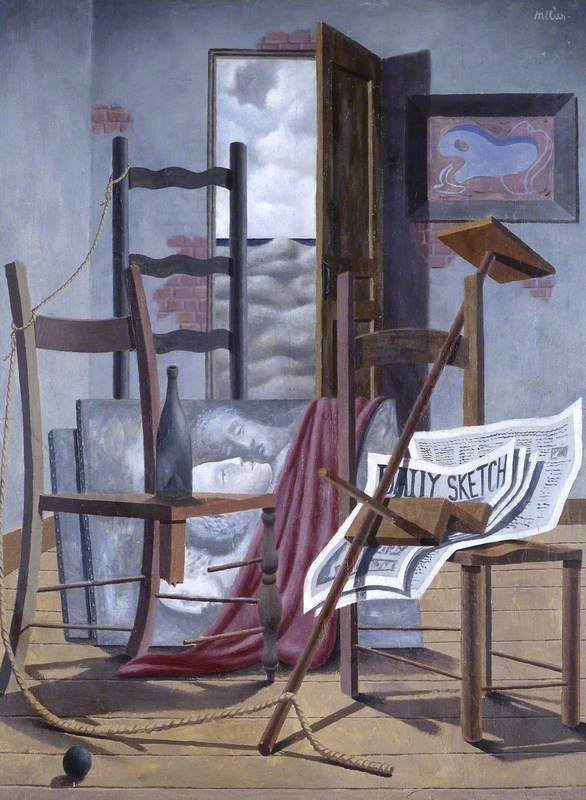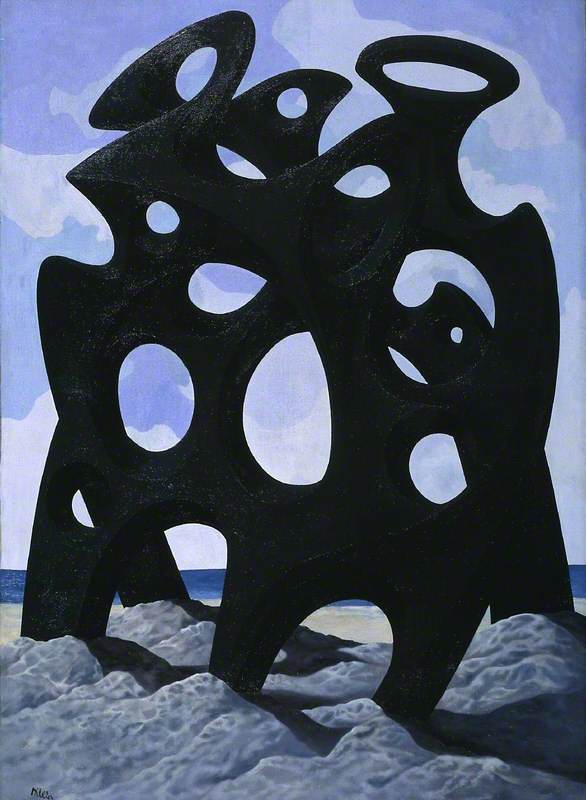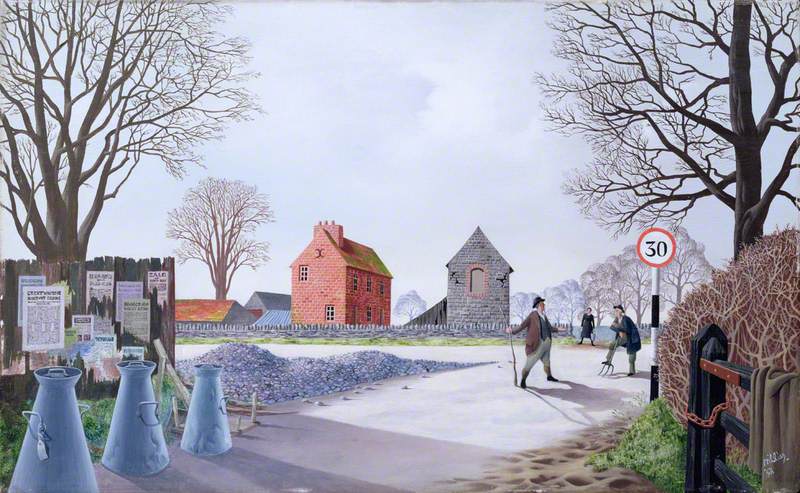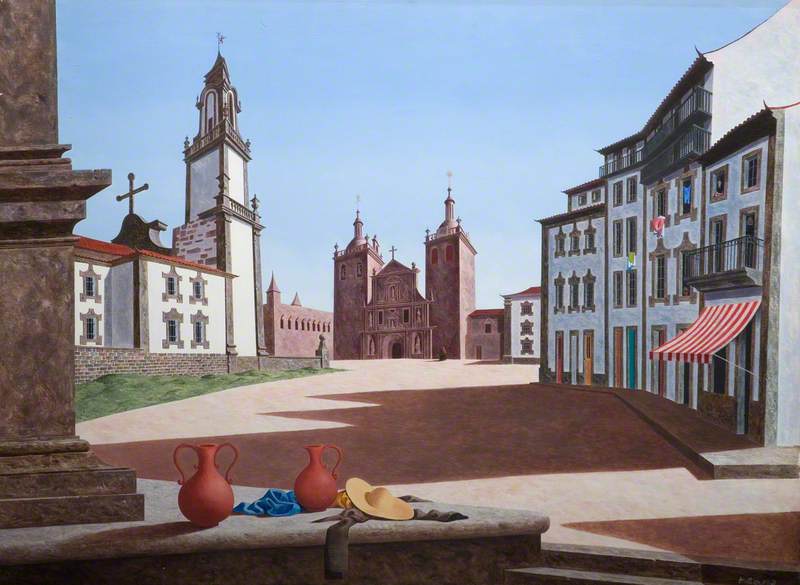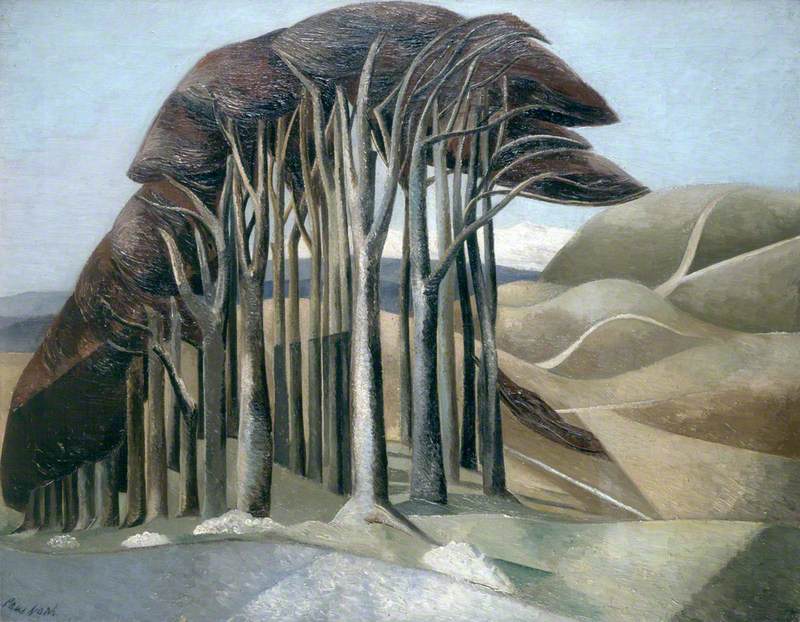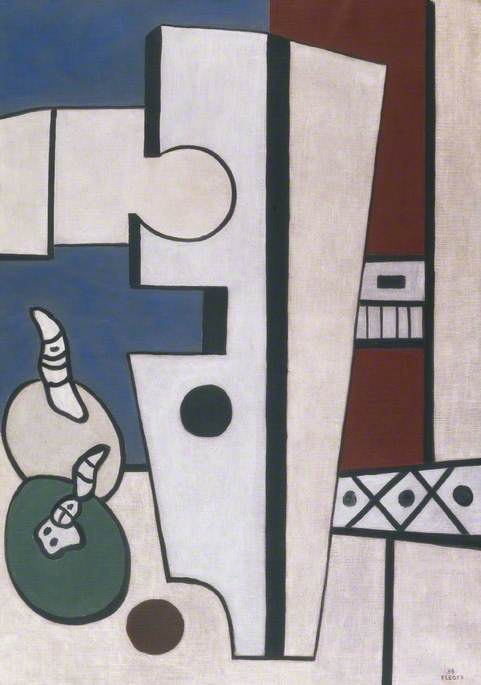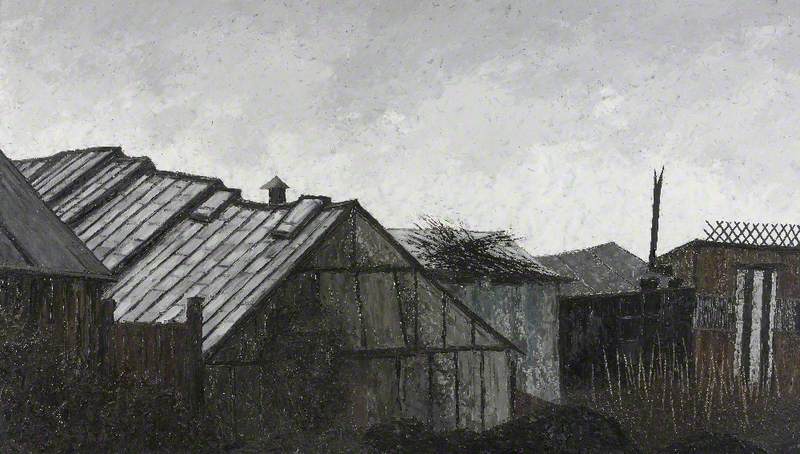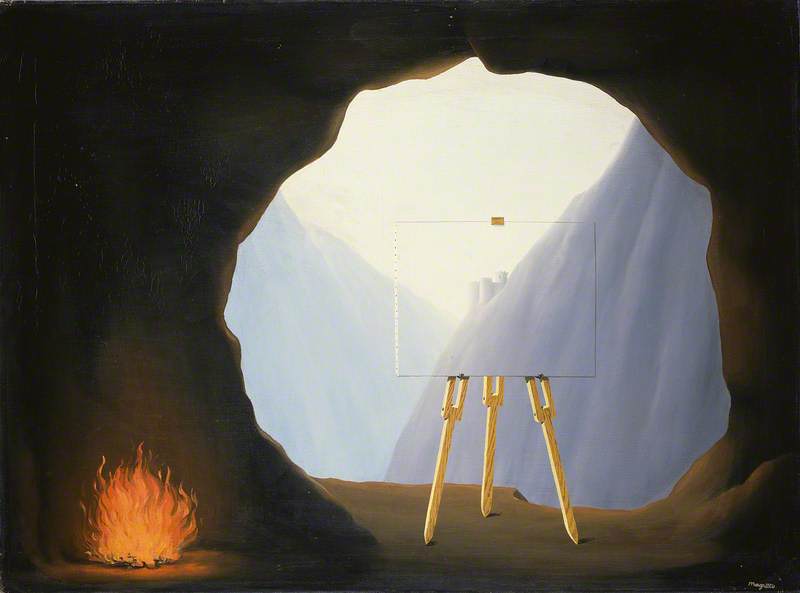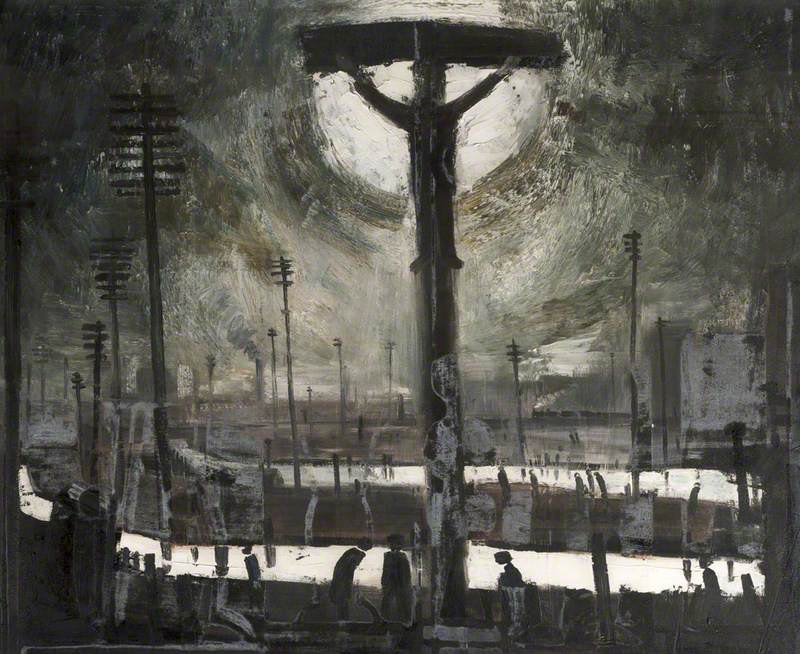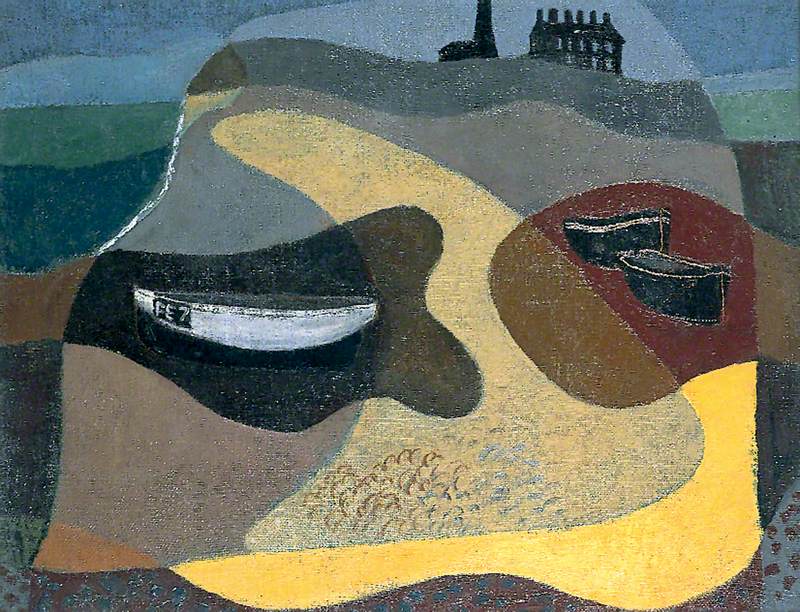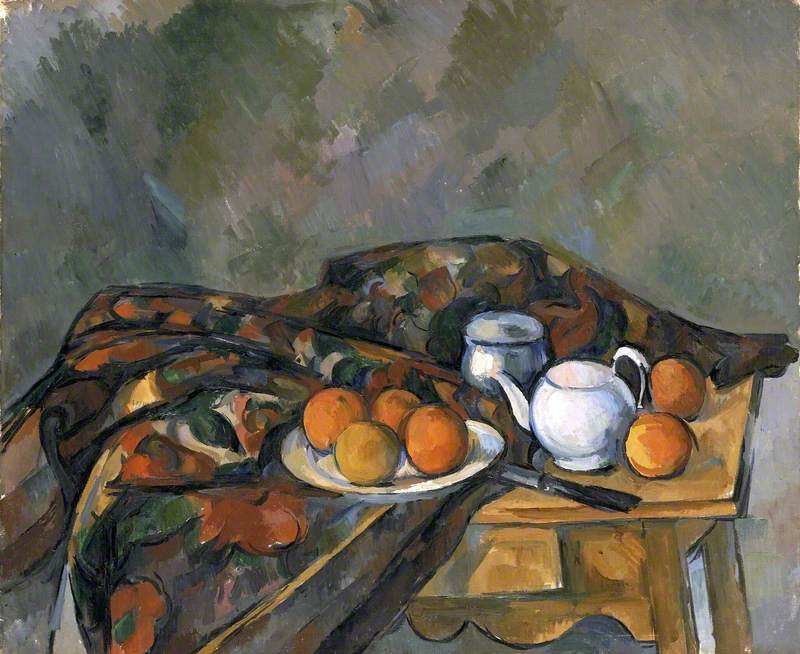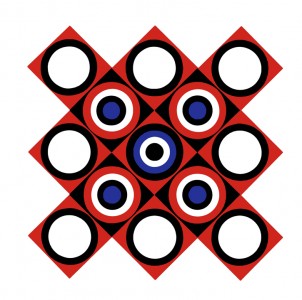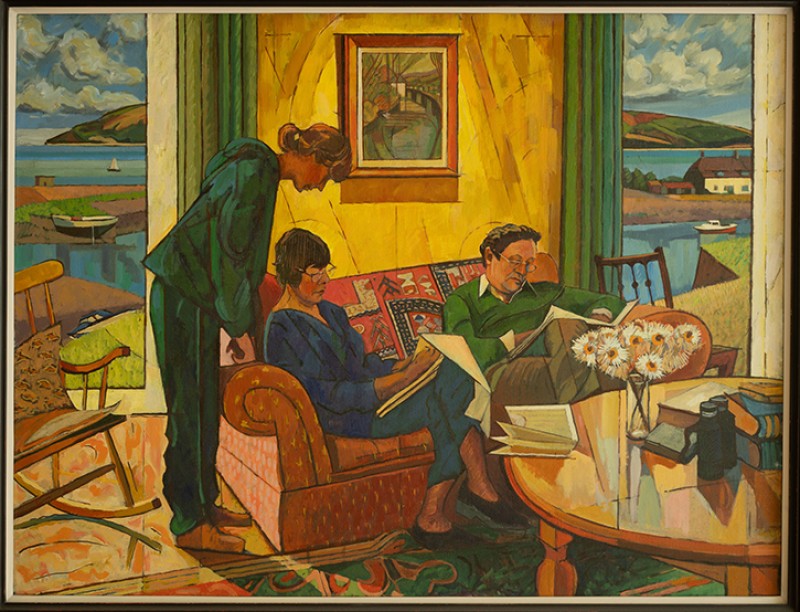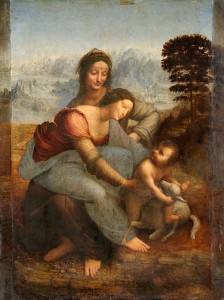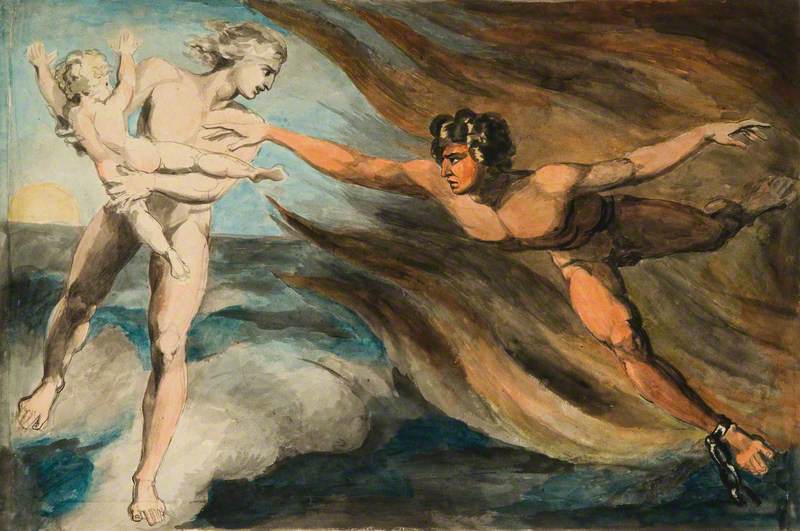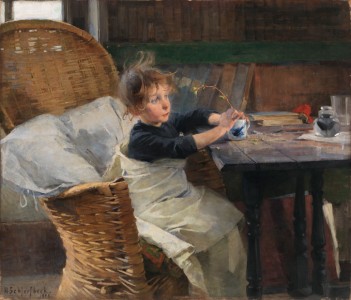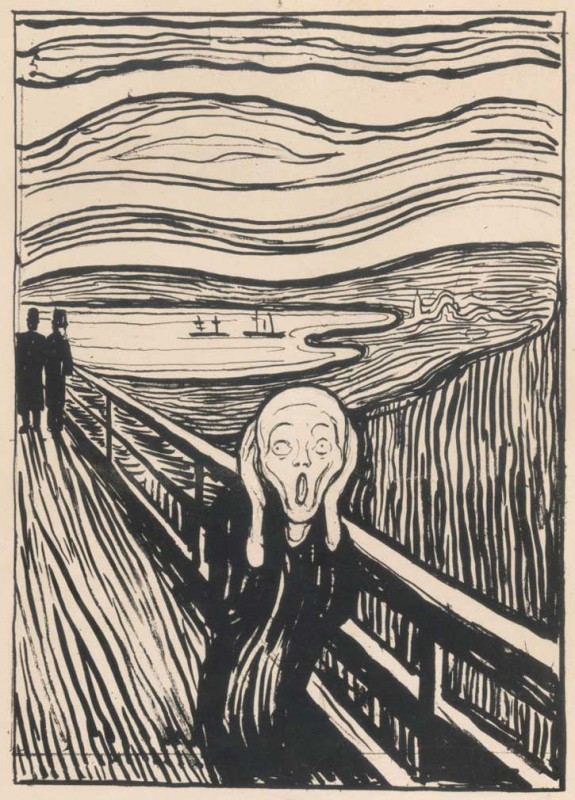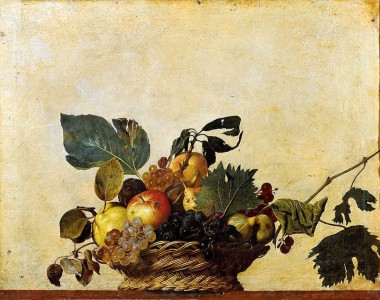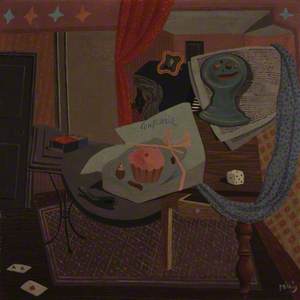Tristram Hillier RA (1905–1983) was one of the most accomplished and distinctive twentieth-century British artists. Painting for many years from a base in Somerset, he created pictures in a uniquely intense and memorable style.
Now the first retrospective of Hillier's work in more than 30 years is being held at the Museum of Somerset.
'Landscapes of the mind: the art of Tristram Hillier' brings together over 50 pictures from private lenders and from national and regional collections. Major works include Variation on the Form of an Anchor and La Route des Alpes from the collections of Tate Britain and Pylons and Quantoxhead from National Galleries Scotland. Here are five of the highlights you'll find in the show.
La confiserie
During the late 1920s, Hillier experienced a 'tornado of conflicting influences' including cubism and surrealism. This early painting shows the cubist influence of Hillier's teacher André Lhote, who taught him in Paris during 1928–1930. Still life was a favourite subject matter for the cubists, allowing them to analyse objects from multiple perspectives. Hillier was later a friend of the cubist artist Georges Braque, whom he greatly admired.
Composition 1933 (Interior)
In 1934 Hillier was asked to join 'Unit One', a group of artists, architects and sculptors that was established by Paul Nash in 1933. In Composition 1933 (Interior) Hillier pays tribute to his Unit One colleagues Nash, Ben Nicholson and Edward Wadsworth. A Nash-like sea is visible beyond the door, a Wadsworth abstract hangs on the wall and a profile by Nicholson leans between the chairs.
Variation on the Form of an Anchor
In 1937 Hillier settled with his second wife Leda in northern France where they lived in a country house called L'Ormerie, near Étretat. Many of the paintings he produced between 1938 and 1940, including Variation on the Form of an Anchor, seem to be expressive of the political turmoil quickly spreading across Europe at that time.
The painting also shows the development of the anchor motif which is common in Hillier's work. Here it becomes a sculptural anthropomorphic mass of jet black that blocks the peaceful blue skies and sea behind it. Its personal significance is evident from the fact it remained in Hillier's studio for many years, without being offered for sale.
The Argument
Hillier and his family returned to England in 1940, having been forced to flee France due to the German invasion. Following military service with the Royal Naval Volunteer Reserve, the family eventually settled in Somerset. The county would become a home and inspiration for his paintings for the next forty years.
The Argument was painted during a burst of creativity immediately following his wartime experience. Hillier later stated 'after the three years in which it had been impossible for me to paint, I worked, I think during every hour of daylight.'
Viseu, Portugal
During the late 1940s and 1950s, Hillier spent several months of each year travelling in Portugal, France and Spain. His early explorations of Portugal ignited his artistic imagination – he stated 'This is what I have been looking for for years! The landscape is exciting beyond description with an earth burnt to the tone of old bronze with lights of copper and pale yellow brass...'
Sarah Cox, Exhibitions and Programme Manager with the South West Heritage Trust
'Landscapes of the mind: the art of Tristram Hillier' is on display at The Museum of Somerset in Taunton from 9th November 2019 to 18th April 2020
The exhibition is generously funded by Arts Council England and the Weston Loan Programme with Art Fund

